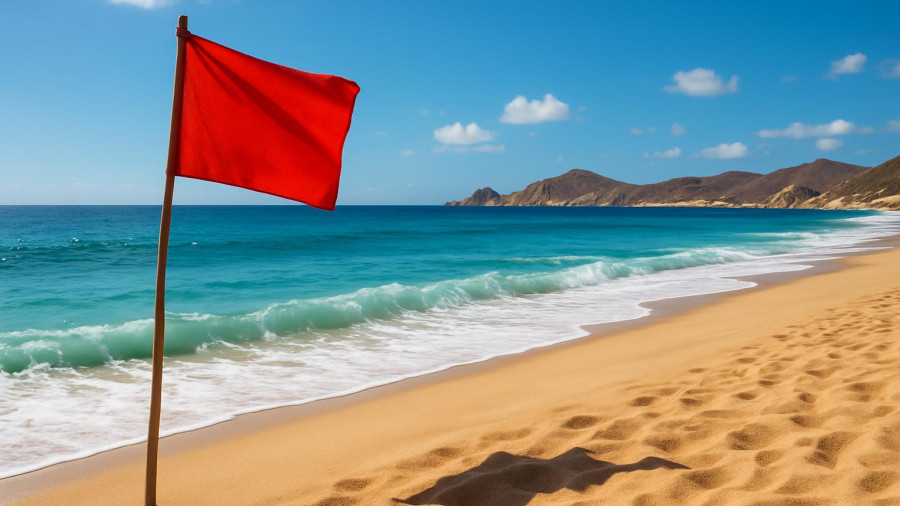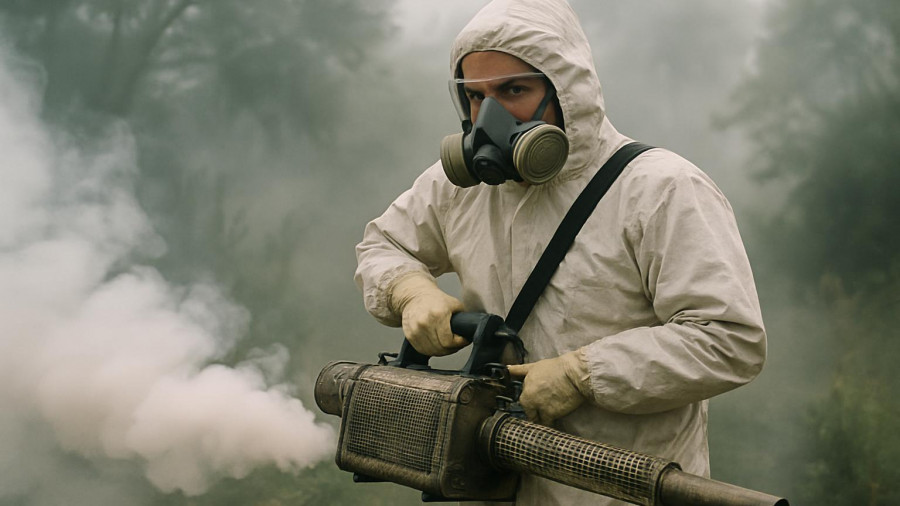Is Cabo safe to visit right now? This is the pressing question on every traveler's mind as they consider a trip to the stunning shores of Cabo San Lucas. With recent weather events, fluctuating travel advisories, and evolving safety recommendations, understanding cabo travel safety tips is essential for a worry-free vacation. This expert guide breaks down everything you need to know—from post-hurricane recovery to beach safety and local customs—to help you navigate Cabo's vibrant landscape confidently and responsibly.
Opening Hook: Is Cabo Safe to Visit Right Now? Unpacking the Truth Behind Travel Safety
Travelers often ask, “Is Cabo safe after Hurricane Lorena?” The good news is that Cabo San Lucas is on a swift recovery path. Airports are operational, most resorts have welcomed guests again, and the tourist zones are being meticulously cleaned daily. “Cabo is bouncing back fast — the airport is operational, most resorts are open, and the tourist zone is being cleaned daily,” explains a local tourism expert from Cabo Verified.
Despite being in the heart of the hurricane season, visitors can expect mostly sunny mornings with occasional short, intense afternoon showers. These weather patterns shouldn’t deter you from enjoying Cabo's natural beauty, as many tours and excursions like snorkeling and fishing are already up and running, especially on the Pacific side and around the marina. It's recommended to confirm tour availability 24 hours before booking to avoid last-minute surprises.
Overview of Cabo Travel Safety Tips and Current Conditions
Post-Hurricane Lorena Recovery and Safety Status in Los Cabos
After Hurricane Lorena, many tourists are understandably concerned about the condition of the infrastructure and safety in Cabo San Lucas. Fortunately, recovery efforts have prioritized restoring key tourist areas. Major hotels and resorts have reopened their doors, and the airport is fully functional, allowing for seamless arrivals and departures. The local government and tourism industry have committed to daily cleaning and maintenance, ensuring that public spaces remain safe and welcoming.
“Travelers should feel assured that while some natural debris was initially an issue, cleanup crews have worked tirelessly,” notes Cabo Verified Reporters. This progress not only boosts visitor confidence but helps restore normalcy for the local community dependent on tourism.
Weather Patterns and Their Impact on Travel Safety in Cabo San Lucas
September through November is traditionally part of Cabo's hurricane season, bringing a mix of hot, humid days and sporadic afternoon thunderstorms. While these short bursts of rain may interrupt plans briefly, they rarely last long and often clear up by evening. Mornings are typically bright and pleasant, offering ideal conditions for sightseeing and outdoor activities.
Visitors are encouraged to pack accordingly—lightweight, waterproof gear and sun protection—and plan flexible itineraries. Keeping an eye on weather apps and local advisories can help you adjust your plans safely. Overall, weather conditions currently permit enjoyable travel with reasonable precautions.
Essential Safety Tips for Tourists Traveling to Cabo San Lucas
Safe Beaches and Swimming Guidelines in Cabo San Lucas
Beach safety is a top priority for any traveler to Cabo. Post-hurricane conditions mean that some beaches may have hazardous currents or debris, marked by red flags indicating no swimming zones. For a safe swimming experience, Medano Beach and Santa Maria Beach are generally recommended, featuring calm waters and regular lifeguard presence.
An expert from Cabo Verified advises, “Always check daily beach conditions and heed red flags, especially post-storm, to ensure a safe swimming experience.” Following these alerts protects tourists from dangerous waves and rip currents that can be life-threatening.
Transportation Safety: Navigating Taxis, Ubers, and Official Shuttles in Los Cabos
Getting around Cabo safely means being vigilant about transportation choices. Tourists should avoid unmarked taxis, which can sometimes lead to scams or unsafe experiences. Instead, use official taxi stands or ride-sharing apps like Uber or Didi—both available, though their coverage can vary by area.
“Booking early and using official services are key to a safe and enjoyable trip to Cabo,” advises a travel safety expert from Cabo Verified. For airport transfers, prearranged shuttles or authorized taxi services are preferred. Carry small denominations of local currency to pay drivers efficiently and avoid confusion.
Avoiding Common Tourist Mistakes and Scams in Cabo San Lucas
While Cabo is generally safe, common tourist pitfalls can mar the experience. Visitors should beware of “free tequila tours” that often come with hidden costs or unsafe conditions. Swimming at non-designated beaches or ignoring red flags poses health risks. Additionally, purchasing goods from unlicensed street vendors may lead to counterfeit items or inflated prices.
Staying alert and informed is crucial. Use trusted guides, verify vendor credentials, and maintain a cautious approach, especially in crowded market areas or when approached by unsolicited offers. This prudence enhances both safety and enjoyment.
Tourist Activities and Excursions: What’s Safe and Available in Baja California Sur
Current Status of Tours: Snorkeling, Fishing, and ATV Adventures in Los Cabos
Many popular excursions in Cabo have resumed following recent disruptions. Snorkeling trips, fishing expeditions, and ATV tours operate primarily on the Pacific side and in the marina area. Because conditions can change quickly, travelers should confirm their bookings at least 24 hours in advance.
These adventures offer exciting ways to explore the natural beauty of Baja California Sur safely. Professional operators emphasize safety protocols and equipment maintenance, helping visitors enjoy their experiences with peace of mind.
Swimming with Marine Wildlife: Safety and Regulations Around Orcas and Whales in Cabo San Lucas
Swimming with orcas and whales in Cabo is a captivating but controversial activity. While it remains legal, safety and animal welfare concerns have prompted calls for stricter regulations. Authorities are monitoring interactions closely to protect both visitors and marine life.
Tourists interested in these marine wildlife tours should opt for licensed operators who follow ethical guidelines. Observing from a respectful distance is currently the safest and most responsible way to experience Cabo's rich ocean ecology.
Cultural Events and Seasonal Considerations for Safe Travel to Cabo
Local Festivals and Their Impact on Tourist Safety and Crowds in Los Cabos
September brings vibrant celebrations like Mexican Independence Day on the 16th, along with art nights in San José and local food fairs. These festivals enrich the visitor experience but also mean larger crowds and heightened activity in popular tourist zones.
While these events are safe and well-organized, travelers should plan ahead, book accommodations early, and remain aware of crowd control measures. Embracing local culture responsibly adds to a memorable and secure stay.
Planning Your Visit During High Season: Booking Tips and Safety Precautions
The high season from November through April attracts record-breaking numbers of tourists to Cabo. For smooth travel, secure hotel bookings, activities, and restaurant reservations well in advance. This preparedness minimizes stress and avoids last-minute disappointments in a busy environment.
Additionally, maintaining flexibility and following ongoing safety advice from officials help ensure a positive experience amid the seasonal rush.
Financial Safety: Currency Exchange and Payment Tips for Travelers in Cabo San Lucas
Current Exchange Rates and Best Practices for Handling Money Safely in Cabo
Understanding the currency exchange landscape is vital. Currently, 1 USD approximates 17.2 MXN. Tourists should carry some Mexican pesos for tips and small transactions, where paying with local currency often fetches better rates. Most hotels, restaurants, and shops accept US dollars and credit cards but may offer less favorable exchange rates.
For financial safety, use ATMs at reputable locations, avoid exchanging money on the street, and monitor your accounts during travel. This vigilance protects against fraud and ensures smooth transactions throughout your stay.
Expert Insights & Best Practices for Cabo Travel Safety Tips
“Booking early and using official services are key to a safe and enjoyable trip to Cabo,” advises a travel safety expert from Cabo Verified.
Experts emphasize thorough preparation and reliance on authorized providers as pillars of safe travel. Staying informed about local conditions and respecting regulations enhances your Cabo adventure, fostering both safety and cultural appreciation.
People Also Ask: Addressing Common Questions About Cabo Travel Safety
Is Traveling to Cabo Safe Right Now?
Yes, Cabo is safe for travelers with current post-hurricane recovery well underway, operational tourism infrastructure, and ongoing safety measures.
Can You Brush Your Teeth with Tap Water in Cabo San Lucas?
Tap water in Cabo is generally not recommended for drinking or brushing teeth. Bottled or filtered water is advised for optimal health safety.
What Do I Need to Know Before Traveling to Cabo?
Understand local weather patterns, respect beach safety flags, use official transportation, avoid tourist scams, and prepare travel documents in advance.
Where Is Jennifer Aniston's Place in Cabo?
Jennifer Aniston owns a private home in the exclusive community near Cabo San Lucas, illustrating the area’s appeal to celebrities seeking luxury and privacy.
Conclusion: Key Takeaways on Cabo Travel Safety Tips
Prioritize official services, check daily safety conditions, and book early to enjoy Cabo safely and fully.
Call to Action
Don't miss the best news and updates about everything in Cabo! https://caboverified.com
 Add Row
Add Row  Add Element
Add Element 




Write A Comment